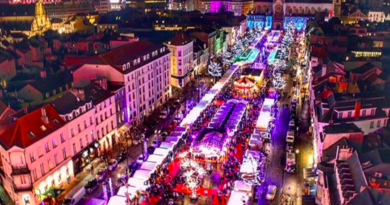Reading Basque wines
“From the moment you open the bottle, you have to realize that wine is something that is alive. It changes, moment by moment. The temperature, the smell, the taste, you have to pay attention to all of them. It’s a journey,” said Alfonso Escubos, Spanish wine expert at the beginning of the workshop: Reading wine: Amazing Wines from the Basque Mountains, which was held on Wednesday October 18th at Librebook, in the Matongé neighborhood of Ixelles.
Alfonso comes from a long tradition of wine making. Born and raised in Cataluña, he knew how to distinguish the color of ripe grapes, their level of sweetness. He understood how to read the heartbeat of a vineyard from a very young age. “My grandfather had a large plot of land,” he said. “My brother and I used to help pick the grapes. We would bite one or two, just to taste the sugar, then the pits with our front teeth. Because the pits can be very bitter if the grape is not ripe. That was our way of knowing it was the right time.”
He went on to study Enology, a passion of his, and now, besides running a bodega of select Spanish wines in Brussels, he organizes wine tasting sessions and courses. He’s lived in Frankfurt, London and Brussels, though his roots will always be in the region of Penedès, which to some participants he seemed to be pronouncing as Panades. “Yes,” he explained. “In Spanish there are only five vocals. In Catalan, there are eight. That’s why.”
Of the four wines that were to be tasted, three of them were from the Denomination of Origin (DOC) Arabako Txakolina, where the average temperature is 13 degrees. The altitude ranges between 130 and 280 meters above the sea. The whole area comprises about 250 acres and hosts seven wineries. The one chosen for the workshop is called Beldui.
The first bottle was a Espumoso Txakolí Sancti Victdoris Brut Nature Gran Reserva, a sparkling white wine made with 100% Hondarribi Zuri grapes. “Everything starts from the moment you open the bottle,” said Alfonso. “You have to avoid the pop and the cork flying across the room. For parties it’s okay, but for tasting you want to keep as much gas as possible, because that’s how the wine was meant to be drunk.” In the glass, the wine looked of an intense yellow, clean and shiny. There were traces of honey and flowers, some minerals too, slate and limestone. Brut Nature refers to the fact that no sugar has been added.
The second one was a Xiribil 2016, also 100% Hondabirri Zuri. “You can have Hondabirri Zuri and Hondabirri Belsa,” explained Alfonso. “In the Basque language, Zuri means white, Belsa red.” He went on to say that for these wines, from the Beldui winery, the amount of sulfites is about 80 mg per liter. Organic-produced wines have between 40 and 80 mg, while the norm allows for up to 300 mg per liter. The color was a pale yellow-green, very clear. Txakoli wines are known for their light carbonic nature, which is often referred to as “aguja” or needle.
The third one was a Beldui 2016, also of the Hondabirri Zuri variety. For these wines, Alfonso explained, the grape juice is allowed to stay longer in contact with the “lías,” which is the combination of crushed skins and pits. Leaving the juice longer helps the natural process of fermentation and it gives the wine extra flavors and smells, which are noticeable from the moment the wine is poured. “The aromas change over time,” said Alfonso. “If you let the wine rest in your glass, it will open to you. It’s a matter of training your nose, to pay attention, but it’s all there. You have to be willing to catch the nuances of each glass you are poured.” In the aftertaste of this wine, there were notes of green apple, fresh hay.
The last wine was from DOC Rioja Alava, a white Gorrebusto 2014 from the Torre San Millán winery, made with 100% Viura grape. The vines are between twenty five and forty years old, which has an effect on the concentration of sugar and flavor, explained Alfonso. The older a vine is, the fewer grapes it produces, but its qualities are enhanced. This Gorrebusto wine has been aged for three months in casks of American oak, which explains its intense golden color. There was an aftertaste of banana, which Alfonso pointed out is often the case with the Viura variety. The aromas that could be picked up were those of violet flowers, smoky roast from the oak, as well as some minerals. The right mix of delicate flavors to wind down the evening.



